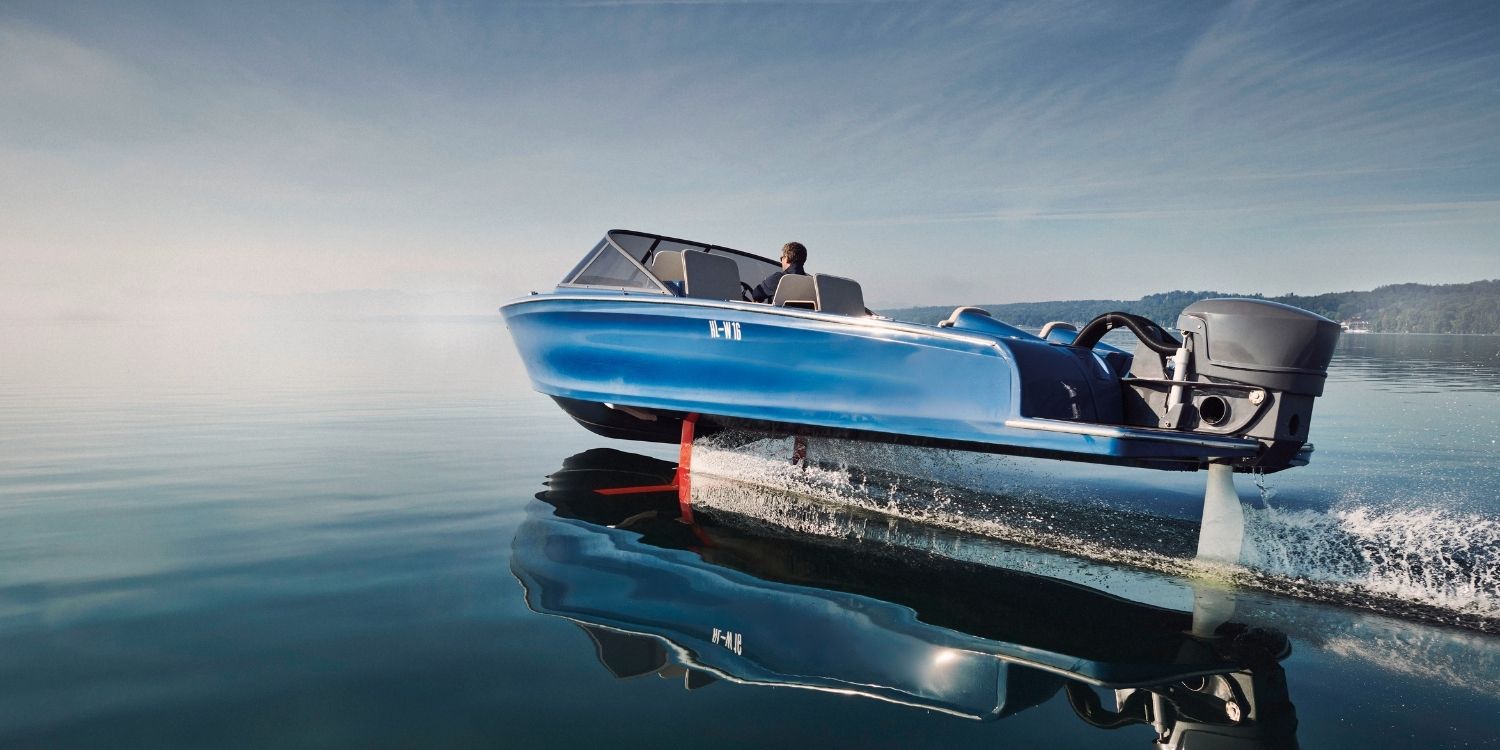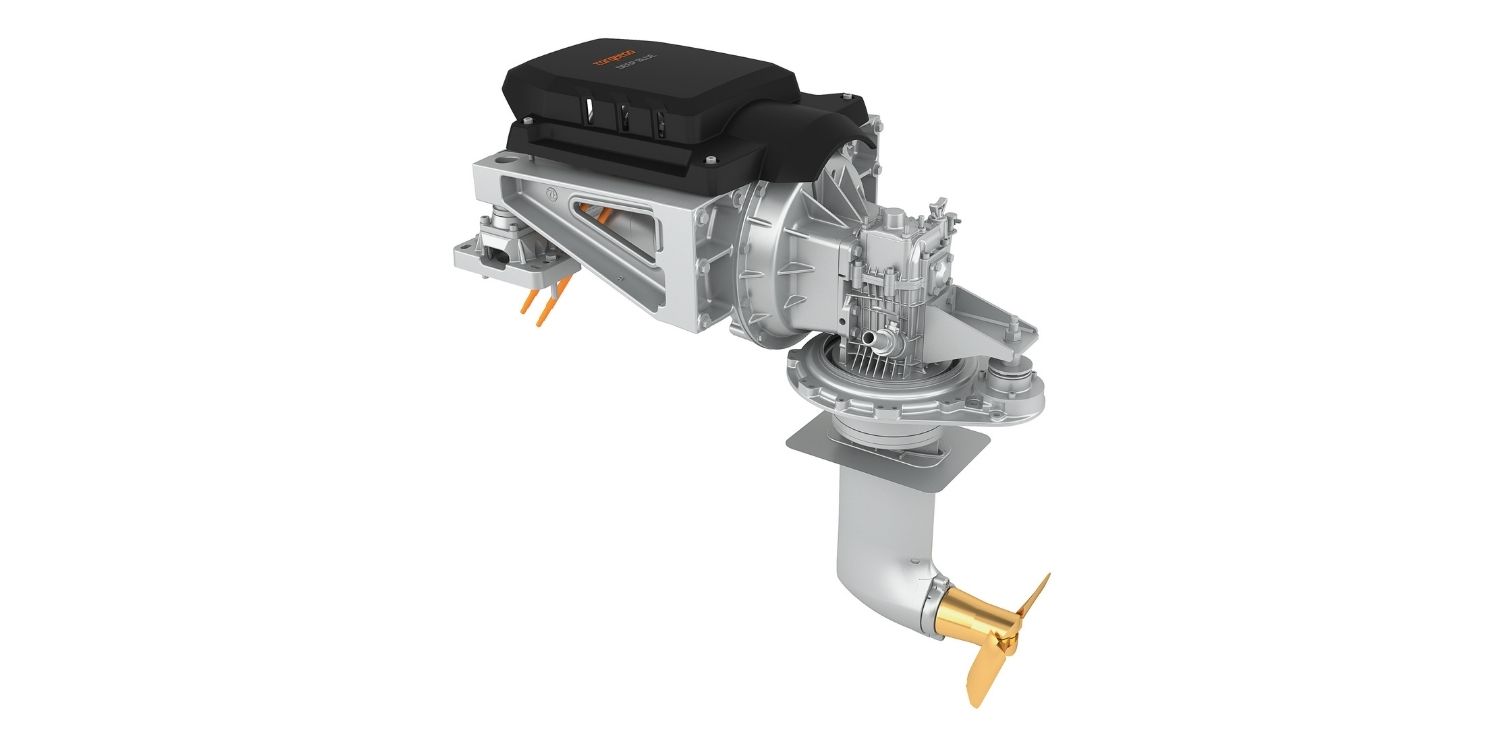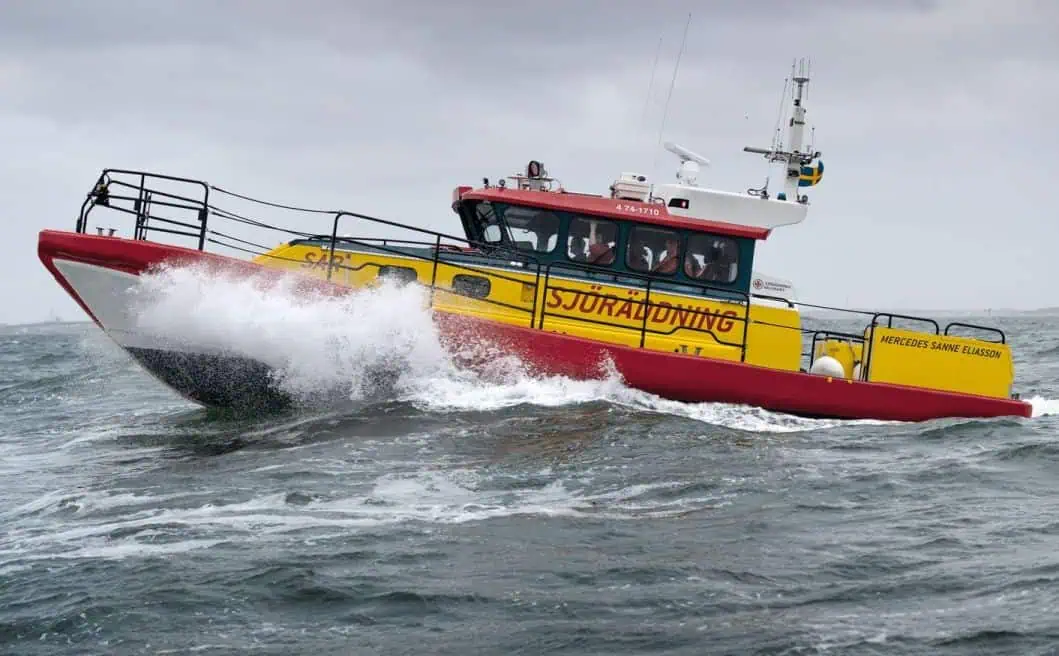Enormous investments from industry and governments are helping to drive the mobility revolution on the water. “To reap all the benefits of the electric age, boat builders and users need a flexible system that integrates different energy sources, drive units, and digital controls,” says Phillip Goethe, Torqeedo’s Project Sales Director. The Deep Blue energy management system is becoming the “power Android” for boating.
TORQEEDO’S DEEP BLUE IS THE WORLD’S MOST INTEGRATED, HIGH-POWER ELECTRIC PROPULSION SYSTEM FOR BOATS. WHERE WILL WE BE IN 2025?
We will continue to build highly efficient electric motors, of course, but one of Torqeedo’s core competencies is optimizing the latest technologies from the automotive sector for use on the water – with respect to shock resistance, waterproofing, and other safety requirements. We have proven this with BMW’s Deep Blue high-voltage batteries. By 2025, we will see big changes in battery and charging technology on the water.
WHAT WILL CHANGE? DO YOU HAVE AN EXAMPLE?
Battery design will be highly optimized for the specific application in terms of power capacity, volume, and shape. Batteries for fast planing boats will look different from those for commercial boats like ferries and will be tailored to specific requirements, such as range, on-board comfort and hydrodynamics. In charging technology, we expect to benefit from existing automotive solutions. This year, we are adding a 22kw AC charging solution that gets a 40kWh Deep Blue battery up to 80% in just 1.5 hours. There are already several e-boats in almost every marina and it’s no problem to charge via standard shore power. But by 2025, the Type 2 EV plug will be introduced to the marine charging infrastructure for an even safer, more user-friendly charging experience. With increasing numbers of electric boats the demand for solutions to handle smart charging challenges like billing and peak load avoidance will increase.

The new 22 kW AC charger can charge a 40 kWh battery to 80 % in 1.5 hours
IS THERE ALREADY A BEST PRACTICE EXAMPLE FOR A MODERN CHARGING INFRASTRUCTURE?
Vita Power has built a DC fast-charging network in Monaco and Nice on the Cote d’Azur – a great pilot project! I also like the efforts being undertaken in Venice to support the electrification of the city’s famous water buses with AC charging columns along the canals, thus creating a public charging infrastructure. As we will soon see entire electric fleets, we will need systemic thinking in building up a charging infrastructure on land and managing energy on board.
IT’S INTERESTING THAT WE HAVEN’T TALKED MUCH ABOUT THE ELECTRIC MOTORS SO FAR …
An efficient electric motor is, of course, at the heart of any system. Our Deep Blue system has always combined powertrain and energy management. Initially, the battery capacity was limited to 12kwh with a 25kW outboard motor. Today, we offer 100kW with an 80kWh battery bank – and those numbers will continue to increase. More importantly, in the future it won’t always be a battery alone that provides the power; there will be several different energy sources available on board such as solar cells, back-up generators running on clean fuels, or fuel cells. Torqeedo’s focus is on the intelligent interconnection and combination of completely different energy sources.
WHAT EXACTLY DOES THE SYSTEM DO?
Even if one energy source is not producing, for example solar at night, the system will still run stably. Deep Blue’s energy management automatically prioritises consumers, when necessary: the motor is, of course, prioritised over hotel loads like air conditioning, for example. The system also manages the different energy sources to ensure they are performing at their peak, taking into account their specific characteristics. For example, a diesel range extender has to warm up before it’s at its most efficient, and a solar charging module has different charge characteristics from a fuel cell. The system knows this and uses them smartly to keep the boat’s systems running at their peak performance and efficiency.
WHAT POTENTIAL DO YOU SEE IN FUEL CELLS?
Right now, we’ve got an exciting pilot project in the Netherlands, where a coach boat will be equipped with a Deep Blue propulsion system and a fuel cell. Instead of installing more batteries, the energy storage unit will be charged by the fuel cell when the boat is idling. This maximizes uptime, and coaches benefit from the low noise. At Torqeedo, we don’t necessarily want to build fuel cells. Instead, we focus on fully understanding and leveraging the technology so we can integrate it smartly – just like we’ve already done with other energy sources. Currently, we’re offering DC power interfaces for range extenders like Fischer Panda generators. Soon, there’ll be similar communication interfaces for fuel cells.

The Candela Seven interconnects its flight control system, which steers the hydrofoils, with the Deep Blue system.
WOULD IT BE CORRECT TO SAY THAT TORQEEDO IS BUILDING AN OPERATING SYSTEM FOR ELECTRIC MOBILITY ON THE WATER?
Yes! A “power Android” for boats (laughs). It’s important because such a system will give boat builders and users greater flexibility by allowing them to integrate different energy sources and system data into their digitized boat via data interfaces. Candela, a hydrofoil powerboat, can interconnect its flight control system, which automatically controls the hydrofoils, with Deep Blue. And in China there’s already a Deep Blue drone automating the mapping of coastlines. An electric propulsion system is a perfect fit for the digital age.
WHY?
With each software release comes new functions. For example, we can now perform data analysis and many maintenance tasks remotely. In the future, customers who buy a product will be able to add new functions or monitor charging performance via an app – which is now standard in the automotive industry. I can also imagine you could book shore charging on demand – or optimize the system for solar charging.
TORQEEDO AND ZF HAVE LAUNCHED A NEW SAILDRIVE. WHY?
ZF is a high-tech company, a market leader in the segment, and a great partner. We use the same mounting as the common saildrive for diesel engines, which makes integrating the saildrive easier for boat builders. Saildrives are very exciting for hydrogeneration because the propeller is always pulled through the water horizontally, thus optimizing the inflow. We developed a new hydrogeneration algorithm that will be specifically parametrized for the project.

High-tech collaboration: The all new Deep Blue Motor with ZF saildrive
ARE FURTHER COLLABORATIONS WITH HIGH-TECH COMPANIES LIKE ZF CONCEIVABLE IN THE FUTURE?
Sure! With our core know-how of electric drivetrain and system expertise, we want to empower B2B partners to bring their vision into the electric age – whether it’s high-tech catamarans or the new steerable thruster for electric ferries that we just unveiled with Poseidon.
HOW DOES SUCH A COLLABORATION WORK OUT?
Our goal is to deliver a well-rounded, reliable, and affordable integrated system, including a superior after-sales service. That’s why we always try to understand the specific use case first – budget, reach, cruising speed. What’s the peak power requirement, how high are the hotel loads, what are the wind and current conditions? This allows us to determine the size of the motor and battery banks together with our partners. After all, they need to know they’re making a sensible, sustainable investment. And the best thing is that if one type of boat is targeting several use cases, Torqeedo is the partner that can provide different propulsion and energy management options between 600W and 200kW.












